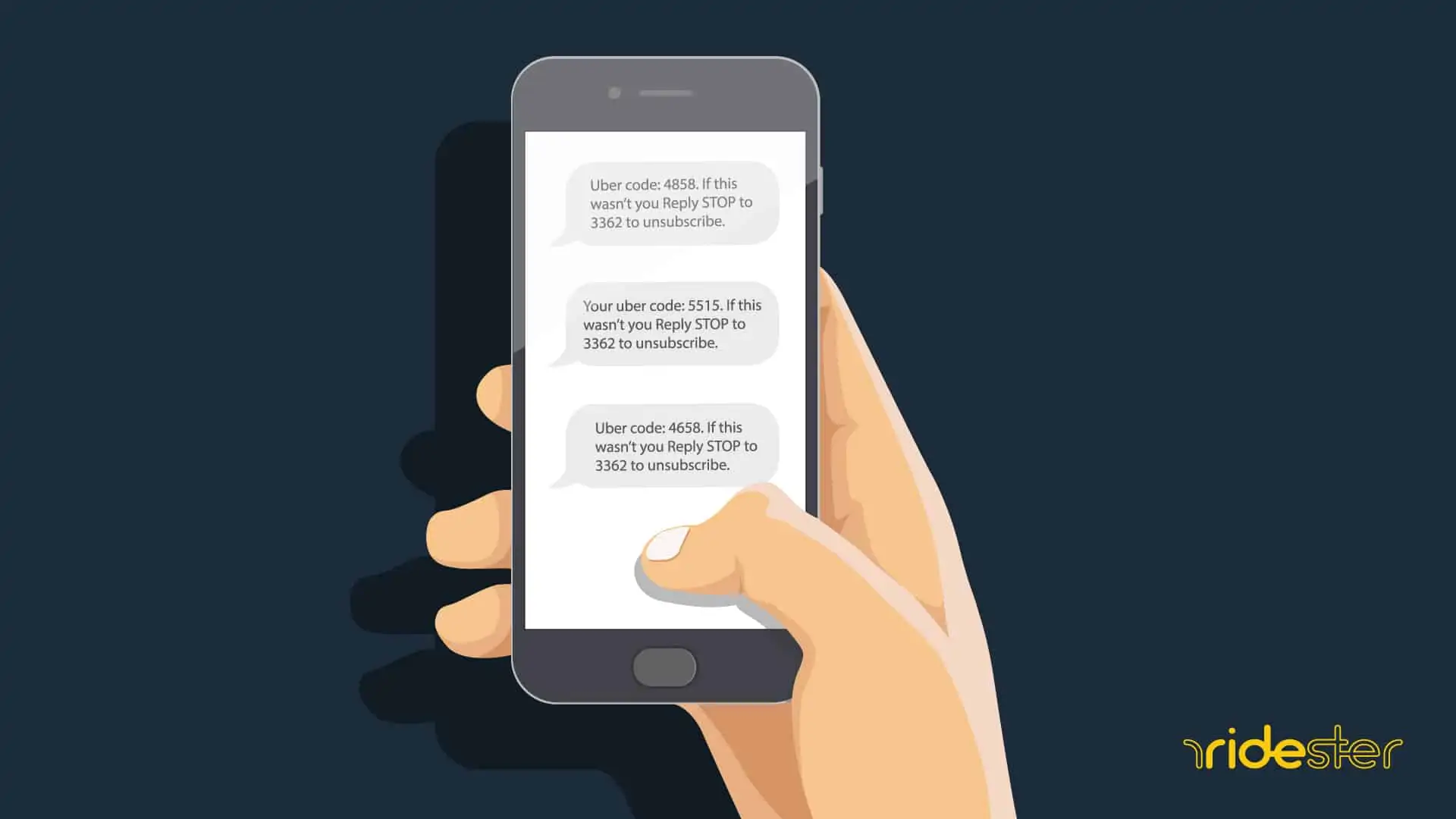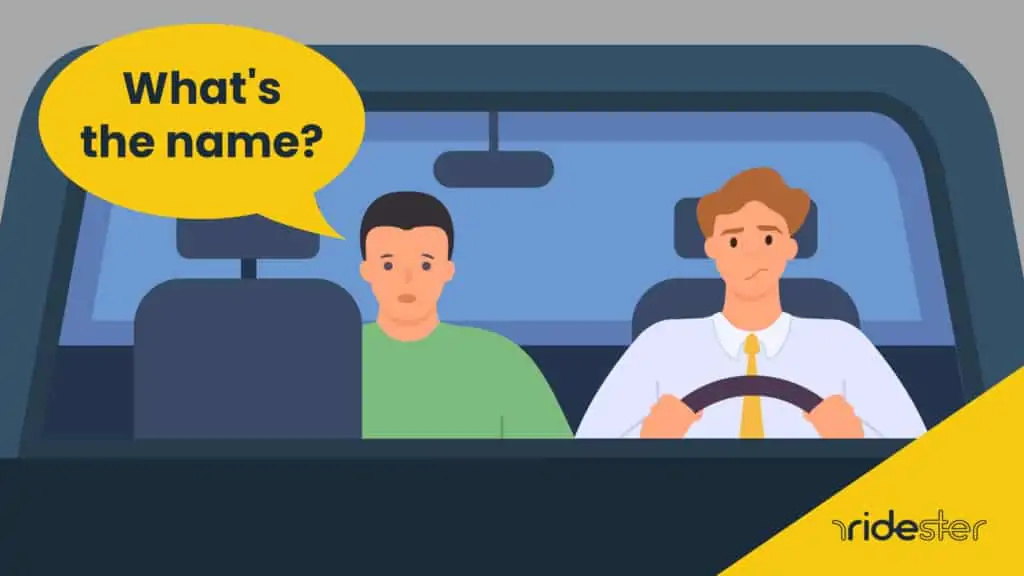Key Takeaways
- The Uber code text scam involves fake verification codes sent via text, attempting to gain unauthorized access to Uber accounts.
- Authentic Uber code texts are sent following account activity. Scammers mimic these texts, often using incorrect phone number formats.
- Never share verification codes with unknown contacts. Verify suspicious messages directly with Uber and report any scam attempts.
- Delete scam texts after taking a screenshot for evidence, avoid responding with ‘STOP’, block the sender, and inform Uber of the fraud.
Why Do I Keep Getting Texts From Uber?
An “Uber code text” is a four-digit verification code sent via SMS to your phone when you log into your Uber account from a new device or account.
It is part of Uber’s two-factor or multi-factor authentication process to ensure security, sent to the phone number associated with your Uber account.
To use the code, a user must enter it into the Uber app or through a web browser. However, these codes are not always from Uber.
Scammers have learned to mimic the Uber Code Text for nefarious purposes. And they are pretty adept at doing so, making it challenging to know fakes from the real thing.

If you are receiving a lot of texts from Uber, and you haven’t changed your account or moved to a new device, it’s highly likely that someone else is sending the messages and is trying to scam you.
Authentic Uber Code texts or SMS messages from Uber are usually received right after performing an activity on your account.
If you’re getting a random text from an unknown number asking you to reply to an unknown number, don’t be fooled. Typically, these impostor messages look like they’re from Uber.
Still, they often use numbers from 11- digit phone numbers, not the abbreviated 6- or 10-digit short code messages that Uber usually uses for SMS.
Brett’s Take: Thoughts From an Expert
Getting this type of code sent to your phone does not always mean that you’re being hacked or phished.
A common reason for these texts might be a result of someone mistyping their phone number. However, you should see this as a red flag and be aware.
If you ever receive an Uber Code message that you have your doubts about, you should probably go with your gut and consider it spam.
Consider immediately checking your bank/credit card statements, changing your Uber password, and then contacting Uber customer support right away.
How The Uber Code Text Scam Works
First, you receive a 4-digit code via SMS, a type of text message from an unknown number.
The message fraudulently claims to be from Uber, and even appears similarly. They even remind you not to share the code and to ‘reply stop’ to opt-out.
Scammers who are attempting to steal your information generate these fictitious codes as part of attempts to steal the personal information of Uber users.
These sorts of scams are quite common, and the perpetrators are quite crafty in sending messages that look authentic.
How to Prevent Getting Scammed By the Uber Code Text Phishing Attempt
It’s necessary to take a few precautions to prevent yourself from being scammed by an Uber Code text scam.
1. Delete the Message
Once you recognize an Uber Code as a phishing or scam text, you should delete it. But, before doing so, use your phone to take a quick screenshot.
By capturing this image, you can show evidence of the scam if you need to get in touch with Uber support for assistance.
2. Never Reply ‘STOP’
Sometimes, getting you to reply ‘STOP’ is part of their scam.
Not only can doing so help scammers verify your number, but many of them also use premium-rate phone numbers. Replying can risk incurring hefty charges on your phone bill.
3. Block the Number the Codes Come From
After taking your screenshot, consider using your mobile phone’s features to block that particular number.
You can do this relatively quickly and easily on an Android or IOS phone. This action will prevent that number from contacting you again in the future.
4. Report the fraud to Uber
Anytime you receive fraudulent messages from Uber, you should contact their customer service team.
These sorts of scams aren’t limited to Uber customers either. Uber customers, Lyft drivers and customers, and Uber eat users are all in the crosshairs of these scammers.
By reporting suspicious activity to Uber support or other appropriate authorities, you can document the spam texts, which are likely attempts to capture your personal data or credit card number for illicit purposes.
This particular sort of scam is generally referred to as phishing. Defined loosely as an attempt to trick a user into providing personal account details through some kind of deception, phishing is a common scam.
Some scams involve entire websites crafted to mimic legitimate sites, but their design is simply a trick to phish for your personal and protected info for use against you later.
Mishing is a particular type of phishing scam that utilizes text messaging.
With the popularity of text messaging, it’s no surprise that thieves are very active in trying to scam people through their texts.
Smishing is the same sort of thing, only instead of texts, they focus on SMS messages, like Uber Code texts.
Ways to Secure an Uber Account

If you have an Uber account, it is a good idea to set up two-factor identification.
That is the easiest way to secure your account beyond a simple username and password. But, even that is not foolproof.
It’s no accident that scammers are spamming users with authentic-looking Uber Code texts, as they know people are motivated to secure their account and may react instinctively to such a message.
You can also install an app used to filter spam messages. A quick search in your app store will reveal a few options.
It is a very good idea to always use a secure password that you change periodically.
This preventive measure can sometimes seem like a nuisance, but it is the easiest way to avoid being hacked.
Keeping your app up to date is also essential. Uber pushes out updates that address security vulnerabilities as they are discovered.
By keeping your phone up to date, you take advantage of their countermeasures. Failing to do so leaves the door open for scammers and others to infiltrate your device and account.
Frequently Asked Questions
Why am I not receiving a verification code from Uber?
If you’re not receiving a verification code from Uber, check if your phone number is correct in the app. Update it if needed and resend the code. Remember, only the latest code works. It could also be a carrier issue blocking the code, so contact them or power cycle your phone.
Has Uber been hacked?
Yes, Uber has experienced a hack in the past. In 2017, personal data of millions of customers and drivers, including names, addresses, phone numbers, emails, and driver information, was compromised.
However, Uber claims that no financial information was exposed and there was no subsequent fraud, a claim viewed with skepticism.
Is someone else using my Uber account?
If you notice unfamiliar trips, unexpected driver messages, unrecognized receipts, or unauthorized account changes, someone might be using your Uber account.
Reset your password if you can still log in, and report the issue to Uber for further assistance.
How do you stop getting texts from Uber?
To stop getting texts from Uber, reply ‘STOP’ to any of their messages. This will also stop marketing and promotional texts, but you can re-subscribe by replying ‘START’. You can unsubscribe from emails separately if desired.
Wrapping Up
Scammers are out there, and they are always on the prowl trying to steal your personal information.
Smishing, phishing, spam email messages, and spam texts are the tools of their trade.
You can deprive them of the opportunity to steal your information by taking advantage of all the security enhancements available, like two-factor authentication and verification, and by staying alert for suspicious activity.
And remember, anytime you suspect fraud, contact customer service or the authorities.






